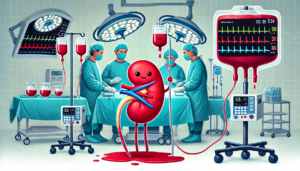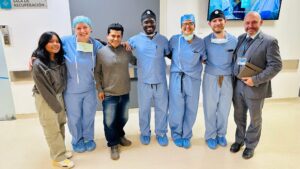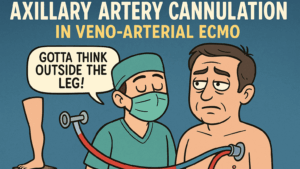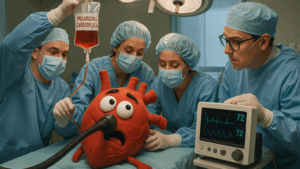This experimental study, published in the journal Life, investigates the cerebral inflammatory responses associated with two different cardioplegic solutions—Histidine-Tryptophan-α-Ketoglutarate (HTK) and Del Nido—in the setting of cardiopulmonary bypass (CPB). Using a porcine ischemia-reperfusion model, the researchers evaluated key physiological, biochemical, and molecular markers to determine the neuroprotective efficacy of each cardioplegia type.
Brain injury and cerebral inflammation remain significant postoperative complications following CPB in cardiac surgeries. Neurological impairments such as cognitive dysfunction, encephalopathy, and even stroke can impact up to 32% of patients. Thus, optimizing cardioplegia not only for myocardial but also for cerebral protection is of paramount importance.
The study included 18 pigs, randomly divided into two groups of nine. Each group received one of the cardioplegic solutions during a controlled 90-minute cardiac arrest phase, followed by 120 minutes of reperfusion. Biopsies of various brain regions, including the frontal cortex and brain stem, were collected for molecular analyses. Researchers focused on key markers: the hypoxia-inducible factor HIF-1α and pro- and anti-inflammatory cytokines, including IL-1β, TNF-α, IL-10, and IL-1 receptor antagonist (IL-1RN).
The primary finding was that HTK cardioplegia led to significant electrolyte imbalances during and after ischemia. Notably, the HTK group experienced persistent hyponatremia and hypochloremia, alongside reduced calcium concentrations. These imbalances were not observed with Del Nido, which maintained more physiologic electrolyte levels. Electrolyte stability is critical for brain function, as disturbances like hyponatremia can cause cerebral edema, neuronal dysfunction, and increase the risk of seizures. The more balanced electrolyte profile of Del Nido cardioplegia likely confers a neuroprotective advantage.
Another central outcome was the difference in cerebral inflammation. While most inflammatory markers did not show significant differences between groups, HTK cardioplegia was associated with a significantly higher mRNA expression of the proinflammatory cytokine IL-1β in the frontal cortex and brain stem. IL-1β is a key mediator of cerebral inflammation, and its elevation suggests that HTK may provoke a stronger proinflammatory response in certain brain regions. However, at the protein level, IL-1β expression did not differ significantly, which could indicate a temporal lag between transcription and translation or reflect the limited observation window of 120 minutes.
Interestingly, both cardioplegia types showed comparable levels of HIF-1α expression and nuclear translocation in all brain regions, indicating similar hypoxic stress profiles. HIF-1α is a critical marker of tissue response to hypoxia, regulating genes involved in angiogenesis, cell survival, and metabolism. The fact that Del Nido and HTK elicited equivalent HIF-1α responses suggests that both cardioplegias offer similar protection against ischemic hypoxia in the brain.
Similarly, the expression of other cytokines—TNF-α, IL-10, and IL-1RN—was also comparable between the groups. TNF-α is involved in early inflammatory responses, while IL-10 and IL-1RN are anti-inflammatory regulators. The balanced profile of these cytokines across both groups supports the overall comparability of the two solutions in modulating systemic inflammation.
In terms of hemodynamic stability, both groups maintained similar cardiac output, mean arterial pressure, and pulmonary artery pressure throughout the experiment. This suggests that the cardioplegia types did not differentially affect systemic circulatory function during CPB.
The research concludes that although both Del Nido and HTK are suitable for use in CPB, Del Nido may offer advantages in minimizing cerebral inflammation, especially concerning IL-1β expression, and in maintaining more stable electrolyte levels. These findings position Del Nido as a safer and more effective alternative, particularly in scenarios where neurological outcomes are of concern.
Despite its strengths, the study acknowledges several limitations. The short follow-up time (120 minutes post-reperfusion) may not capture long-term inflammatory or neurological consequences. Also, the exclusive use of healthy, young female pigs limits the generalizability of the findings to human patients with comorbidities. Moreover, while experimenters remained blinded during data analysis, the surgical team could not be fully blinded due to solution preparation differences, introducing potential bias.
In conclusion, this study adds valuable insights into the neuroprotective profiles of two widely used cardioplegic solutions. Del Nido cardioplegia demonstrated more stable electrolyte management and reduced cerebral IL-1β mRNA expression, indicating reduced acute cerebral inflammation compared to HTK. These advantages may support the broader adoption of Del Nido in adult cardiac surgery, where neurological protection is critical.
Study ranking = 4 (high quality). This well-designed animal study offers robust molecular and physiological data. While not a human clinical trial, its randomization, blinded analysis, and use of advanced biomarkers strengthen its conclusions. Longer follow-up and clinical replication would elevate the evidence further.

